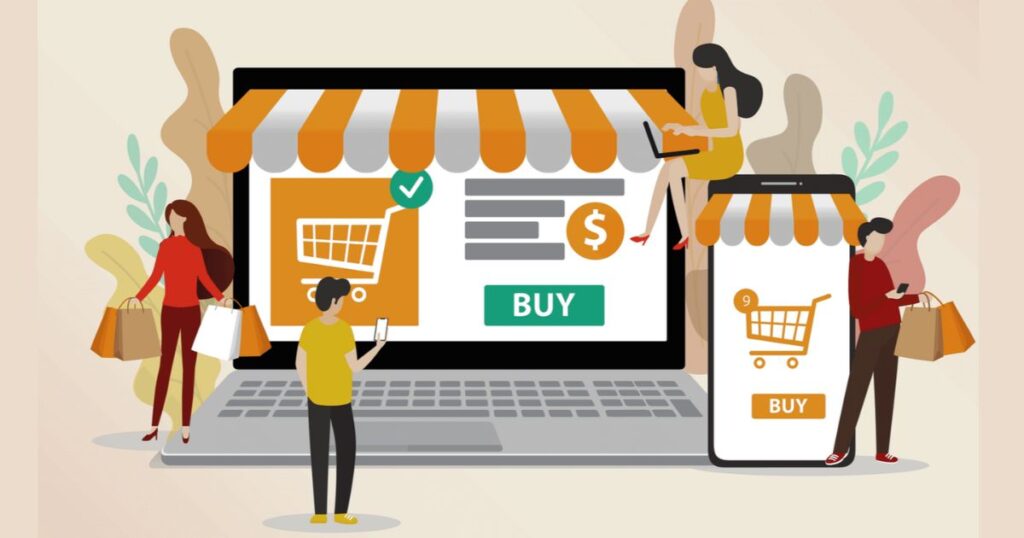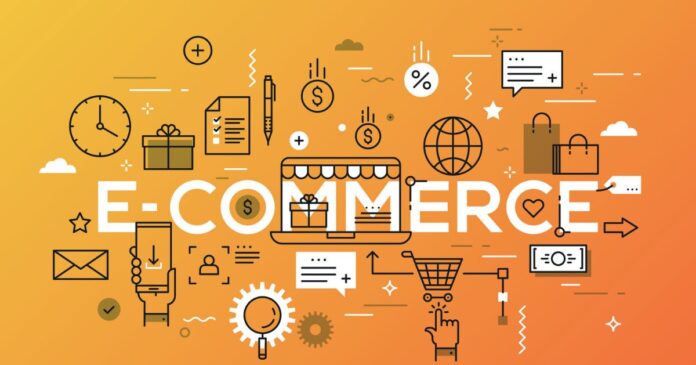E-commerce, short for electronic commerce, refers to the buying and selling of goods or services over the internet. It includes a broad variety of transactions, such as business-to-business trade of goods and services as well as retail purchases made online. E-commerce makes physical storefronts unnecessary, enabling businesses to reach a worldwide customer base and run around the clock.
Electronic payment mechanisms like credit cards, digital wallets, or online payment platforms are commonly used to facilitate transactions in the realm of e-commerce. Technological developments, rising internet penetration, and shifting customer preferences for accessibility and convenience have all contributed to the growth of e-commerce.
Types of E-commerce
E-commerce can be categorized into several types based on the nature of transactions, the parties involved, and the platforms used. Here are the primary types of e-commerce:
Business-to-Consumer (B2C):
Transactions between companies and specific customers are referred to as business-to-consumer e-commerce. This type of e-commerce is the most prevalent and consists of online retail stores where customers buy goods or services straight from companies via the internet. Amazon, Walmart.com, and eBay are a few examples.
Business-to-Business (B2B):
Business-to-Business E-commerce entails business-to-business interactions. The exchange of goods, services, or information between businesses—often in bulk—is the main focus of this kind of e-commerce. Procurement, supply chain management, and internet marketplaces for businesses are examples of B2B interactions. ThomasNet, SAP Ariba, and Alibaba.com are a few examples.
Consumer-to-Consumer (C2C):
Individual customer transactions are the focus of consumer-to-consumer e-commerce. Under this paradigm, people use online platforms to transact with one another directly for goods and services. Generally speaking, these platforms serve as middlemen, easing transactions and giving people a place to display their goods and services. Craigslist, Facebook Marketplace, and eBay are a few examples.
Consumer-to-Business (C2B):
Consumer-to-business e-commerce refers to transactions in which customers individually sell goods or services to companies. Although less prevalent, this strategy is becoming more and more popular as crowdsourcing and freelance platforms grow in popularity. Examples include freelance markets where people sell their skills and services to companies, such as Upwork and Fiverr.
Government-to-Business (G2B):
Transactions between businesses and government agencies comprise government-to-business e-commerce. Online procurement portals are one example of this kind of e-commerce, where companies can submit bids for services and contracts from the government. Websites for government contracts and gateways for license and tax payments are two examples.
Government-to-Citizen (G2C):
Government to People Transactions between government agencies and private persons are a part of e-commerce. Online services offered by government organizations, such as filing taxes, registering cars, and acquiring official documents like passports and birth certificates, are included in this category of e-commerce.
Mobile Commerce (m-commerce):
Transactions made using mobile devices—such as smartphones and tablets—are referred to as mobile commerce. With the growing popularity of mobile devices and apps, customers can use them for shopping, bill payment, and other types of transactions. Both B2C and C2C transactions are included in mobile commerce, which frequently makes use of technology like location-based services and mobile wallets.
Every form of e-commerce has its own advantages and disadvantages for consumers and companies, influencing how products and services are purchased, sold, and traded in the digital era.
Advantages of E-commerce:

Global access: Without the requirement for physical storefronts, e-commerce enables businesses to access a global audience, enabling them to grow their clientele and promote their goods and services abroad.
Convenience: Customers may shop whenever and wherever they choose via e-commerce, free from the restrictions of physical locations and typical store hours.
Cost savings: E-commerce reduces many of the expenses related to traditional brick-and-mortar retail, including rent, utilities, and personnel, enabling companies to run more profitably and maybe provide customers with reduced rates.
Personalization: By using data analytics and algorithms, e-commerce platforms may provide customized product recommendations, promotions, and discounts to each customer based on their interests and past purchases.
24/7 Availability: Customers may shop whenever it’s convenient for them, even outside of regular business hours, thanks to e-commerce websites and platforms that are available twenty-four hours a day, seven days a week.
Increased Product Variety: Compared to traditional retail establishments, e-commerce provides access to a broader selection of goods and services, enabling customers to easily explore and compare products from several sellers.
Ease of Comparison Shopping: Online shopping makes it simple for customers to evaluate features, costs, and customer feedback of goods offered by other vendors, giving them the information they need to make better decisions.
Disadvantages of E-commerce:
Security Issues: Since sensitive financial and personal data is exchanged during e-commerce transactions, there is a risk of fraud, identity theft, and security lapses.
Lack of Tangibility: Unlike traditional retail establishments, online shoppers are unable to physically examine or test out things before making a purchase, which may cause them to become unhappy if their expectations are not met.
Costs and Delivery Delays: Shipping products to clients is a common aspect of e-commerce. This can result in extra expenses and delivery delays, especially for orders coming from overseas or during busy times of the year.
Dependency on Technology: Because e-commerce depends so heavily on internet access and technology, firms are susceptible to cyberattacks, server outages, and other problems that could negatively affect sales and disrupt operations.
Competition and Saturation: Due to the low entry barriers in e-commerce, there might be a lot of rivalry in the market, which makes it difficult for companies to stand out and draw in clients amidst a crowded field.
Returns and Refunds: Because customers cannot physically inspect things before purchasing, e-commerce transactions may result in greater return rates than traditional retail, which presents logistical issues and increased costs for organizations.
Digital Divide: Different consumers do not have equal access to the internet or the tools needed to engage in e-commerce, which can exacerbate already-existing socioeconomic disparities by causing differences in how easily they can obtain goods and services.
While there are many benefits to e-commerce, such as ease of use, accessibility, and worldwide reach, companies and customers should also be aware of the possible risks and difficulties involved with conducting business online. Success in the e-commerce industry depends on having efficient risk mitigation, security, and customer service methods in place.
read more: How to earn money from Freelancing?
Conclusion:
Since its start, e-commerce has evolved significantly, changing the way we live, work, and shop. Spurred by innovation, convenience, and customer demand, what began as a revolutionary notion has become a global phenomenon. One thing is certain as we embrace the future of e-commerce: the trip is far from over and the opportunities are unlimited.

